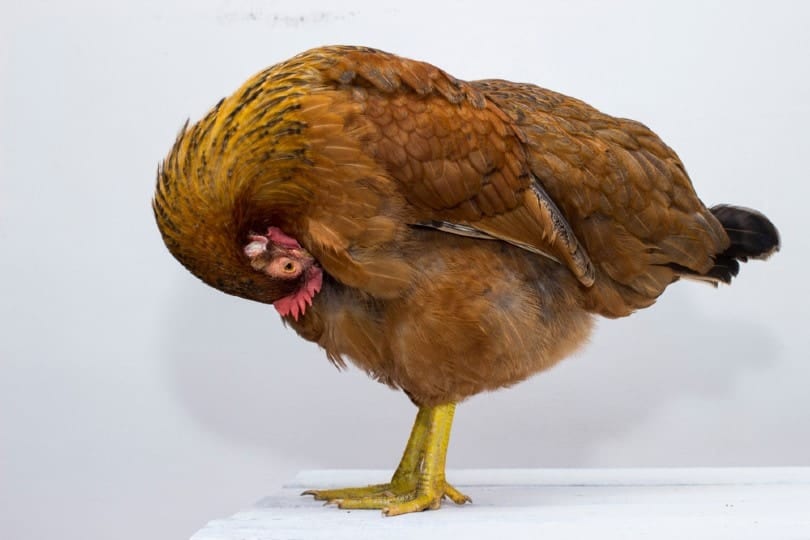Chickens are a subspecies of jungle fowl and they are reared primarily for their meat and eggs. Males are called cocks or roosters while females are called hens. They are kept throughout the world in yards as well as farms and, unfortunately, in some battery farms.
Whether you are considering starting your own coop or are simply looking for more interesting facts about these birds that have become such an important place in our lives, read on to find out more.
The 12 Chicken Facts
1. 3 Times As Many Chickens As Humans
According to recent figures, there are around 26 billion chickens in the world. There are slightly less than 8 billion people which means that if they were shared out evenly, there would be enough for every living person to have three chickens each and still have 2 billion left over.
These birds are popular because they are relatively small, at least compared to other livestock, and easy to care for. As well as large chicken farms that can house thousands of chickens, many homes and ranches have a smaller number, pushing the total figure even higher.
As well as being used for meat, a single productive hen can lay 200 eggs a year, or more, which means that they retain usefulness and value throughout their lives.
China has the largest chicken population. 5 billion of the world’s population lives in mainland China, where they also produce more than 650 billion eggs a year.
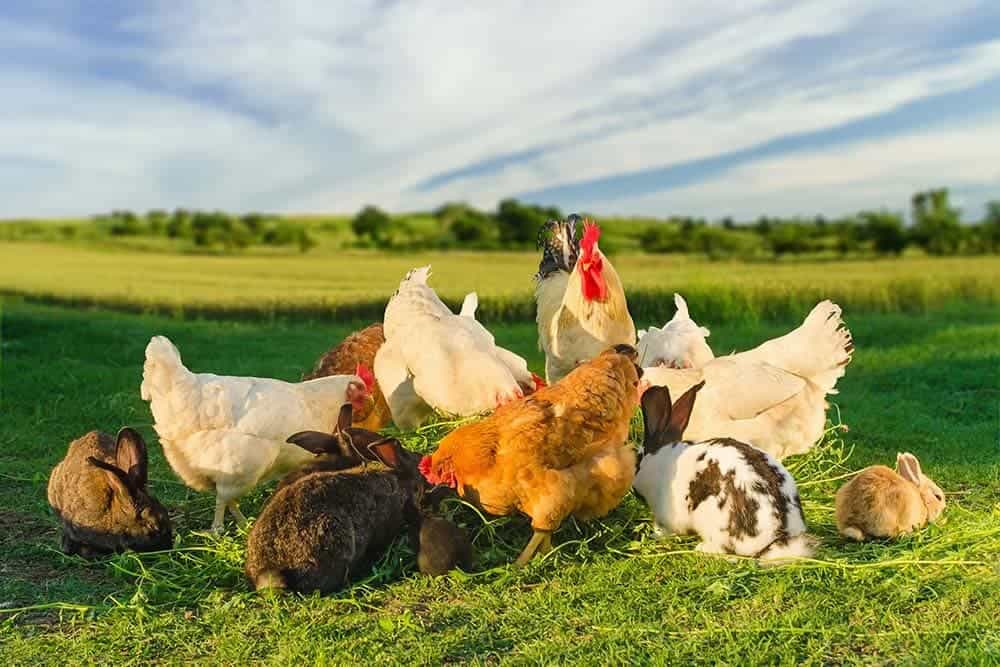
2. There Are More Than 500 Breeds
There are known to be more than 500 total and distinctly different chicken breeds throughout the world.
The American Poultry Association recognizes 120 breeds, while the British Poultry Standards has 93 pure chicken breeds on its books. Serama Bantams are considered the smallest breed while the Jersey Giant is the largest breed of all.
Although there are many reasons that people choose to keep chickens, there are two general categories that are used when describing the bird. Broiler chickens are those that are reared for their meat while laying chickens are prized for the quality or volume of eggs that they produce.
3. The Rhode Island Red Chicken Is The Most Popular US Breed
The Rhode Island Red Chicken is the most popular breed of chicken in the US. The breed’s popularity comes thanks to how easy they are to care for and how prolific they are at laying eggs. While their low maintenance requirements mean that owners do not have to be too hands-on all the time, the Rhode Island Red is also known for being a personable bird and they are popularly kept as pets or companion animals to keep around the yard.
The breed is relatively new, having been first bred in 1854 by a sea captain called William Tripp. Tripp bought a rooster from Malaysia and bred it with one of his own chickens. The resulting bird laid noticeably more eggs leading to Tripp, with a friend, breeding more of this new chicken.
In 1904, the bird was officially recognized by the American Poultry Association. While it does have some popularity in other countries, it remains primarily a US breed. In the UK, for example, they prefer the Sussex Chicken.
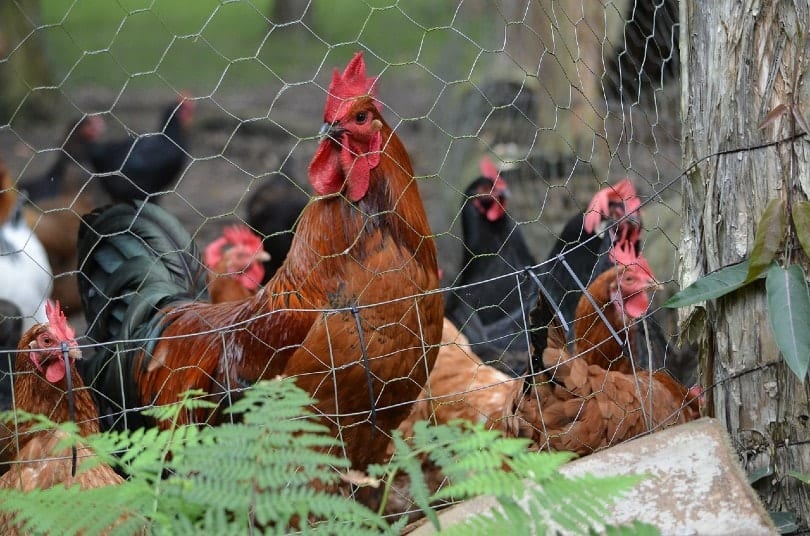
4. Chickens Were First Bred For Fighting
Thankfully now outlawed in most countries around the world, cockfighting was once a popular pastime enjoyed by many. It is also the reason that chickens were first bred, rather than their meat or eggs.
Chickens were also used in some ceremonies and it was not until around the 3rd Century BC that the bird was recognized and bred for its meat production and egg laying prowess. Since then, chickens have been bred and reared that are fatter, that taste better, and that can produce more eggs or uniquely colored eggs every year.
There is also a lot of interest in chicken showing or exhibiting. This is usually reserved for the rare breed and heritage birds, with prizes being given to those that best conform and meet breed standards. You can buy chicks that have been bred from show winners, and these are often available for as little as $10 each. Even if they do not go on to become show-quality chickens, they can still make good pets.
5. The Oldest Chicken Lived To 22 Years Of Age
Chickens bred for meat have a very short lifespan, usually being bred and killed by between eight and twelve weeks old. Depending on the breed in question and the conditions the birds are kept in, those that are left to live a full life can last as long as 10 years.
The oldest recorded chicken was a Red Quill Muffed American Game Hen. She lived for 22 years in Maryland, USA.
One of the previous holders of the title, Matilda, lived to 16 years and was the first oldest chicken recorded by the Guinness Book Of World Records. She was a Red Pyle. Experts claim that she lived so long because she was kept as a pet, lived indoors, and never laid an egg.
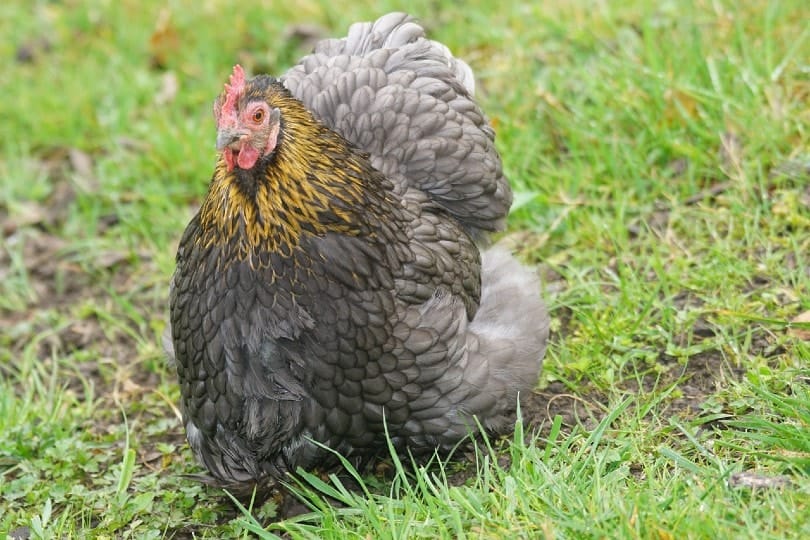
6. The Heaviest Chicken Weighed More Than 10kg
When it comes to chicken weight, there are a lot of factors to consider. Certain breeds grow bigger than others, and everything from the amount of exercise a chicken gets to its food source ultimately determines how much it will weigh. On average, though, you can expect an adult chicken to weigh around 7 pounds.
The heaviest ever record chicken was called Weirdo. The 10kg heavyweight was a rooster White Sully, which is a hybrid of the Rhode Island Red, which is already considered a large breed, and other heavy chicken breeds. Roosters can be aggressive, especially if Weirdo is anything to go by. The mammoth cat is said to have killed two cats and seriously injured a dog during its life.
7. They Can Run At Up To 10 Miles Per Hour
Chickens are fast and surprisingly agile, which can make them very difficult to catch when you need to. In fact, they can run, albeit in very short bursts, at speeds of up to 10 miles per hour. This, coupled with their ability to turn sharply, gives them the edge against predators and enables them to stay safe. In your coop, it also enables them to hop out of your grasp as you reach for them.
Like other game birds, chickens cannot fly despite seeming to have the tools to do so with wings and feathers. At best, they can be described as being able to make long jumps and they may occasionally cover a distance of several yards. Again, this can help them escape from predators and get out of harm’s way.
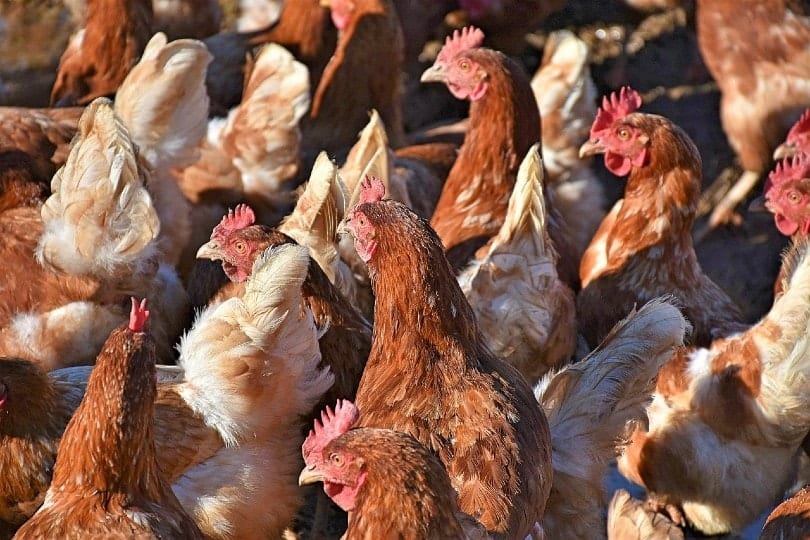
8. Chickens See Colors More Vividly Than Humans
Chickens are often said to be color blind but this is far from the truth. Chickens have five different types of light receptors, enabling them to see a much wider range of colors in more detail than humans: we only have three sets of receptors.
Researchers have said that their ability to see so well comes down to a well-organized and perfectly structured eye. They can also move their eyes independently and have a 300-degree field of vision, all of which help them see the predators that they need to escape from. But their incredible eyesight may also help them identify other chickens and even some people’s faces.
9. Chickens Can Make Up To 30 Distinct Noises
Chickens are master conversationalists and can make as many as 30 distinct noises. They use these noises to alert and communicate with other chickens. They will chatter with one another for a lot of reasons, including the hen’s chorus that comes after laying an egg.
Owners claim that they can recognize a greeting noise from their chickens as they enter the coop and that some chickens may actively tell the owner off if they are deemed to be late with a feed.
If you own chickens, you can talk to them whenever you go to the coop. This will get them used to your presence and enables them to feel more comfortable and at ease around you. Eventually, they may come to answer you back.
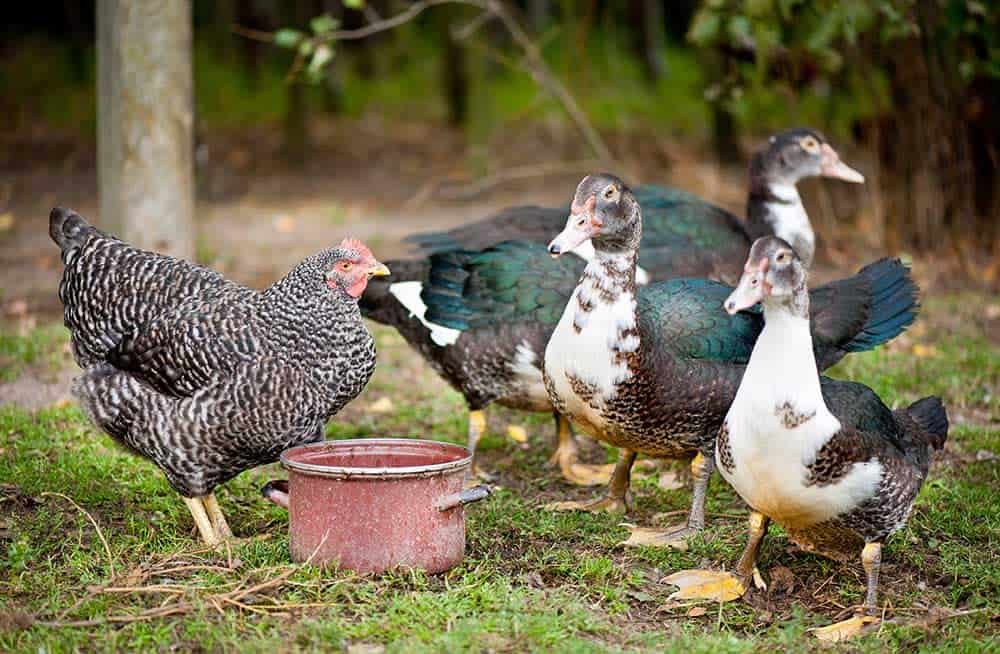
10. They Understand Object Permanence
Object permanence is the ability to know that when an object disappears from view, it has not necessarily gone forever. It is object permanence that ensures babies know that their mother will be back even when they leave the baby’s line of sight. Dogs, cats, crows, magpies, and chickens are some of the animals that are known to understand this concept and it has come to many experts claiming that chickens are as intelligent as one-year-old human babies.
11. Chickens Can Recognize Dozens Of Other Chickens
We’ve already established that chickens have better eyesight than humans, and they are more intelligent than most people give them credit for. They can also communicate with one another to relay messages, warn, and seemingly even congratulate one another. They can also recognize as many as 100 other separate chickens, according to research.
Scientists say that they recognize the shape of the head and the pattern of the comb. They can also recognize other animals. For example, if chickens are kept in a farmyard where there are dogs and even cats that are not considered a threat, they will not react with alarm when they see them. However, if they spot another animal of the same type that could be a threat, they will react accordingly.

12. They Recognize People, Too
Chickens use this same power of recognition to identify human faces, so it isn’t just the mealworm treats or the daily corn feed you’re taking out that attracts them. They recognize you as their owner and source of food and they welcome you as one of the flock.
It is believed that chickens not only recognize faces and react according to any positive or negative experiences with them in the past, but they will also pass this information on to the rest of the flock using their extensive chicken vocabulary.
As such, if you are friendly and pleasant around your chickens, any new additions will soon know, even if they haven’t had too many dealings with you in the past.
 Interesting Chicken Facts
Interesting Chicken Facts
Chickens are an integral part of humans’ lives. Their meat and their eggs are popular food sources while many owners keep them to exhibit or as companion pets. They communicate with one another, letting other flock members, that they probably recognize, of any positive or negative experiences they have had with you or your family dog. They can grow to substantial weight, rarely but occasionally live to 16 years of age or more, and while they can’t fly, they can see in a 300-degree field of vision with better eyesight than humans.
You may also want to read:
- Why Do Chickens Eat Rocks and Stones? Here’s Why!
- How Many Chickens Are There in the UK? (Chicken Statistics to Know in 2023)
Featured Image Credit: JLSnader, Shutterstock
